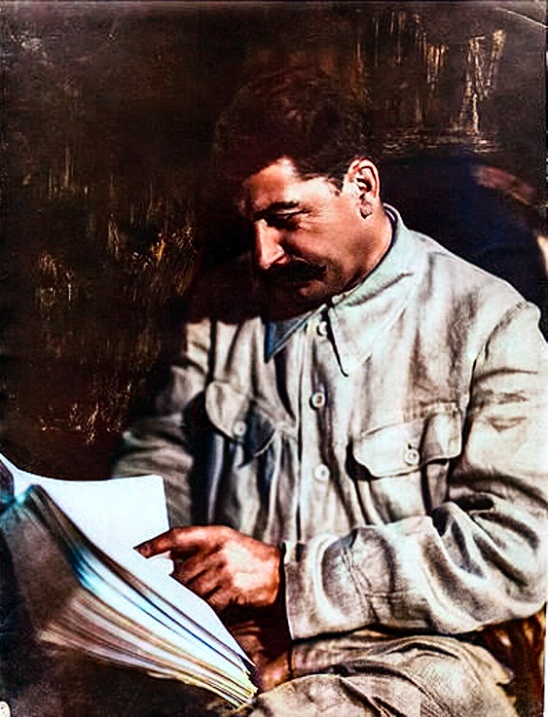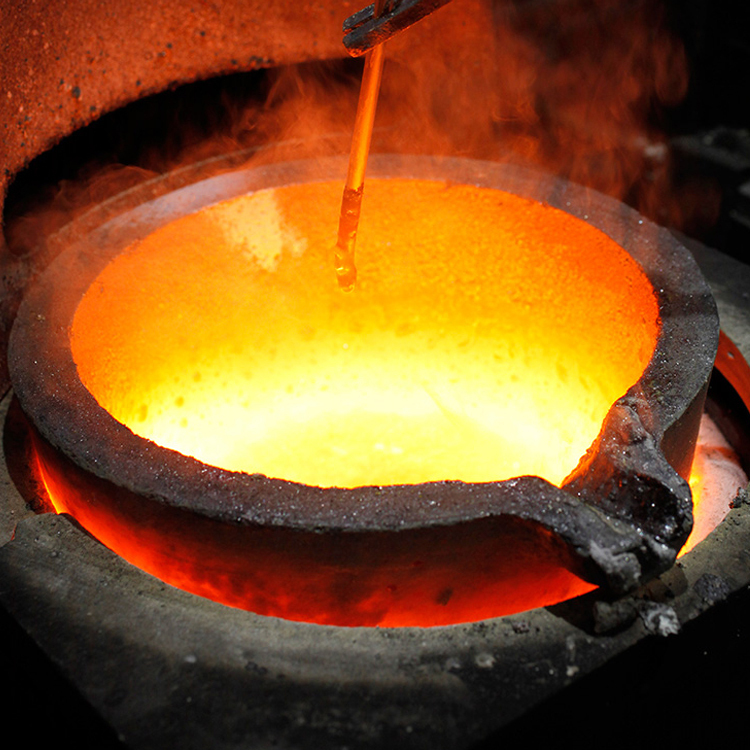Fuck Eisenhower but he hit the nail on the head
Every gun that is made, every warship launched, every rocket fired signifies, in the final sense, a theft from those who hunger and are not fed, those who are cold and are not clothed. This world in arms is not spending money alone. It is spending the sweat of its laborers, the genius of its scientists, the hopes of its children. The cost of one modern heavy bomber is this: a modern brick school in more than 30 cities. It is two electric power plants, each serving a town of 60,000 population. It is two fine, fully equipped hospitals. It is some fifty miles of concrete pavement. We pay for a single fighter with a half-million bushels of wheat. We pay for a single destroyer with new homes that could have housed more than 8,000 people. . . . This is not a way of life at all, in any true sense. Under the cloud of threatening war, it is humanity hanging from a cross of iron.
I dunno how many schools or hospitals you could get for $800 million but I guess “this is why we don’t have healthcare” memes are worth it
It’s such an American thing to criticize the very thing they did for all 8 years.
Of all the presidents Ike was definitely one of them
Feel like this is way more important than the spend.
U.S. depletes 15-20% of THAAD defending Israel from Iran.
Some back of the napkin math based on the article:
$800M at ~$15M each is ~53 interceptors. If that’s 15% of the global stockpile that means the total was around 353 and they’re down to about 300 and the article mentions Lockheed Martin can only produce 50-60/year.
It took Iran only a week to use up a years worth of interceptors. Not to mention the cost difference between the interceptors and the missiles fired at it.
This is not going to be an effective defense against any sort of prolonged engagement with a country like China or Russia.
Yeah, the math does not work here at all. The US very clearly cannot sustain any sort of war of attrition with an industrially advanced adversary at this point.
My revolutionary optimism half thinks this is great news because lol, lmao.
The doomer half thinks this is awful news because the gringos might go straight to the nuclear option when they escalate against China and they get dogwalked for a couple weeks.
That’s my biggest worry as well, we already see just how unhinged the US is. It’s very possible that these psychos will start a nuclear holocaust.
Hence why they pushed for that ceasefire so hard.
This also means they fired an interceptor every 10 missiles, Wich seems weird given 1/4 of the interceptions seemed to have been from this system.
Edit: I think much more likely:
They had 620 in 2021, they make 60 a year, spent 60-80 in their war against Yemen, so they had about 800, spent about one for each of the 500 Iranian missiles, I remember them using over 40 in one of the early volleys. they have less than 300 left Wich would be 40 percent left. They would have spent on average 800 millions a day on this type of interceptor, not for the whole operation. Wich makes sense given that true promise 1 cost 2 billion to intercept half of it.
Nah THAAD is not the only ballistic missile intercept system used. In Israel, a total of 5 systems were integrated together and used to intercept ballistic re entry vehicles directly. SM-3, Arrow 3, THAAD, Arrow 2, and David’s Sling. So THAAD is just one of those 5. The actual price of a THAAD Talon interceptor is 12.7 million, which means 63 THAAD Talon interceptors were used (63*12.7=800.1). Such a number seems realistic given 39 THAAD higher altitude interceptions were caught on video visible from Jordan. That means the other 24 intercepts took place at lower altitudes, THAAD can go as low as 35-40km, and as high as 150km.
Do they are just not firing the interceptors, but every interceptor was successful?
Yet in the much less intense aggression against Yemen, they spent more missiles?
I think they are trying to intercept with everything they got, using several arrow misiles and american ones against each Iranian ballistic one. I think it is even posible that they are left with as low 130 interceptors,
Just
two and a quarter million228 million free school lunches up in smoke.Edit: wow I cannot do math in my head and also it’s much worse
We were chatting about the black panthers the other day, anyway they went down in the anglo history books as “bad guys” (at least what I learned in school) for giving kids free lunches/breakfasts, meanwhile, while [gestures] what you mention all THIS.
History might not be written by the child-killing monsters but the approval rating of child-killing monsters among historians is too damn high.
Thats a bar

Healthcare please

Shut your stupid ass up, can’t tell me what to do!

Donald, turn on the money printer and firehose out a cool $800m in missiles

Yes sir, right away sir!

The virgin THAAD vs the chad $2000 drone
love my worlds most efficient and effective military, very good at what it does. super!
You joke but it is the most efficient at what it does, which is make pentagon leeches very rich
Quite a few factual errors in this article.
$800 million on THAAD Talon interceptors, at $12.7 million per Talon, is 63 interceptors. That’s not 15-20% of the arsenal. 900 THAAD Talons were manufactured as of February this year. 192 of these were sent to the UAE, the only foreign operator. If you assume another 100+ fired in tests and to intercept ballistic missiles from Yemen, the arsenal was around 600, so only 10-11%.
This cost estimate is an estimate, based of this article. It’s an estimate that takes the 39 or so THAAD interceptors seen on video from Jordan and assumes 60% more missiles were used. Here’s the source of the actual numbers counted on video from Jordan.
THAAD struggles against low-flying, hypersonic threats.
It’s not meant or designed to defend against threats like that. THAAD is designed for high altitude interception in the terminal stage, hence the acronym, terminal high altitude air defence. THAAD operates between altitudes of 36-150km. THAAD is designed to be deployed in an integrated air defence network, where other systems such as Patriot PAC 3 MSE, SM-6, and in the case of Israel, Arrow-2 and David’s Sling, take care of the threats at lower altitudes, and systems such as SM-3 and Arrow 3 take care of midcourse phase intercepts. THAAD contributes two things in this setup, the niche ability to plug the endo exo atmospheric gap in terminal defence, that 36-150km altitude envelope. The article actually talks about this later, so I have no idea why this is even mentioned. The other contribution is it’s TPY/2 radar, significantly more powerful than the radars aboard AEGIS equipped destroyers and ashore systems that fire SM-3 and SM-6 and Israel’s Green Pine radars for Arrow 3.
Future defenses need lasers, AI-driven systems.
Lasers against ballistic missiles? Unless there’s a plan for space based lasers, that’s not going to work. The atmosphere is too thick for a ground based laser defence against such high speed and high altitude targets. Laser defence has only just reached operational capability for slow and flying drones and potentially counter rocket, artillery and mortar systems. Long way away from laser defence against ballistic missiles.
One can talk about the strategic limits to THAAD, but who has an equivalent? Russia does not, China is the only nation attempting to operate an equivalent with the HQ-19, first publicly displayed last year. This capability is not cheap, easy to engineer, or readily available. Pakistan wants an HQ-19 battery, but we’ll see if it materialises.
As for limited interceptor stocks, yes they are limited, but the US, NATO, or Israel is not going to sit around and let the opponent fire hundreds of missiles without a response. We saw this in Iran, Israel quickly mobilised their air force, surveillance and covert on the ground assets to suppress Iranian ballistic missile launch facilities. Everyone in the alt media space was talking about how Israeli jets wouldn’t dare enter Iranian airspace to bomb their missile force because of Iran’s air defence, yet that’s exactly what happened, and Iranian air defence didn’t manage to shoot down a single manned aircraft. By the end of the war, Israel was bombing as far into Iran as Yadz, 1850km from Tel Aviv. How many Iranian ballistic missiles have a range greater than 1850km? What was the state of the Iranian missile force at this point? Did the Iranian missile force manage to reduce Israel’s military capabilities in any way throughout the war, or accomplish anything more than bombing population centres? This is a far more pressing concern than the state of the USA/Israeli interceptor stockpile. You can’t enter an attrition war to drain the aforementioned interceptor stockpile, if your capability to fire the missiles that drain this stockpile is vastly reduced. And if all the missile force can do is credibly threaten population centres, and can’t counter military capabilities, it becomes a deterrent or compllence weapon, and not a weapon that can take the fight directly to the USA/Israeli military.













